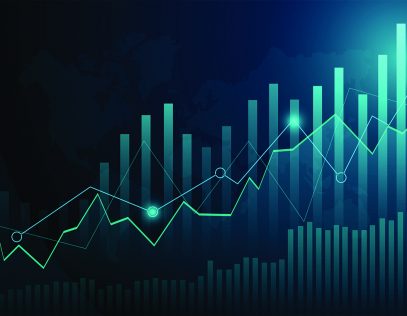We take another look that computing profit indicators using restricted data samples can lead to unreliable measures of arm’s length taxable income to benchmark controlled inter-group transactions. To produce reliable measures, we must change the pervasive transfer pricing practice of considering three-years of data, and consider as many individual company financial data as available.
We consider in our example the current and historical operating profit margin after depreciation of Walmart (GVKEY 11259). In Standard & Poor’s Global (Compustat) mnemonics, operating profit margin after depreciation (including the amortization of acquired intangibles (AM)) is called OMAD, which is also known as EBIT margin. However, we exclude AM from total costs and call the resulting operating profits ratio OMBA (operating margin before amortization).
If Walmart is regarded to be comparable to a controlled tested party under the TNMM (CPM in the United Sates), computing its three-year median OMBA is not sensible because the series of annual operating profit ratios reveal a high polynomial behavior; therefore, slicing any three years of data produces unreliable measures of Walmart’s OMBA.
To visualize our concern with computations of three-year quartiles, we plotted two curves of Walmart’s historical OMBA. The first chart shows that the OMBA series is not stationary, and that we need a higher order than a cubic polynomial to obtain a good fit for Walmart’s declining OMBA trend. The last three years (2018, 2017 and 2016) show an abnormal OMBA pattern–that is, a cluster of three-year data points is lower than the prior historical nadir.
The second chart shows one-period differences in OMBA, which results in a near-stationary series. The third chart shows the behavior of the operating profit markup, which we estimated using equation (1) below, with increasing sample sizes, starting with three years of data and ending with 41 data pairs. On chart three, the solid red line is a Lowess curve showing the number of data years required for the estimated operating profit markup to settle down to a stable value.
We use RoyaltyStat’s online (interactive) regression function and estimate two measures of Walmart’s operating profit markup from which we can obtain the corresponding OMBA. The dependent variable S(t) is Net Sales in year t = 1 to 41 years (using coordinated data pairs from 1978 to 2018), and again using Compustat mnemonics, the independent variable is Total Costs (Lato), which we define as C(Lato) = COGS + XSGA + (DP – AM), including the depreciation (DP) of property, plant & equipment but excluding the amortization of acquired intangibles (AM).
Markup pricing theory
We employ Kalecki’s (1954) profit markup model:
(1) S(t) = λ C(t) + V(t)
where λ is the estimated operating profit markup and V(t) is a transformed random variable with zero mean and Newey-West corrected variance.
The displacement λ ± SE(λ), where SE denotes the standard error of the regression (slope) coefficient, is used to compute a confidence interval around the estimated slope coefficient.
The net profit margin (after depreciation excluding amortization of acquired intangibles) is obtained by indirect least squares (ILS) from equation (1) by using the formula:
(2) OMBA = (λ – 1) / λ
See https://blog.royaltystat.com/the-profit-markup-model-in-transfer-pricing
Walmart’s operating profit margin
The proof is in the pudding, and thus we consider Walmart’s 41 annual total costs and net sales data pairs from 1978 to 2018 to test whether model (1) produces a reliable measure of comparable OMBA:
(3) S(t) ≈ 1.0504 C(t)
with the Newey-West t-statistics = 289.8 and R2 = 0.9999. The intercept is insignificant, which we regard as zero.
We estimated also one-year-differences in the regression variables, and obtained:
(4) ∆S(t) ≈ 1.0604 ∆C(t)
with the Newey-West t-statistics = 59.2 and R2 = 0.9925. The intercept disappears when we take the one-period difference of the dependent and independent variables.
Takeaways
The markup pricing model (1) is found in Kalecki (1954). However, we can obtain earlier versions of markup pricing in classical economics, and in Cournot (1838). See https://www.oecd.org/ctp/transfer-pricing/royaltystatllc-conparability-and-developing-countries.pdf
The Newey-West t-statistics means that we computed HAC (Heteroskedasticity and Autocorrelation Consistent) standard errors. See Green (2018), Section 20.5.2, pp. 998-999.
The regression model (3) produces an OMBA = 4.8%, and regression (4) produces an OMBA = 5.7%. See equation (2). Again, these two measures of OMBA exclude AM from total costs. Measured by the higher Newey-West t-statistics, the regression equation (3) shows stronger (more reliable) results than (4).
An important rule-changing implication of this exercise is that we must select operating profit indicators with a clear theoretical-basis (e.g., Kalecki (1954)), and we must consider many years of data available for each selected comparable. As expected from the statistical law of large numbers, the regression estimates of operating profit indicators using larger data samples produce more reliable arm’s length ranges of near-neighbor values than the computation of quartiles using three years of data. See Jaynes (2004), p. 199.
References
Augustin Cournot, Mathematical Principles of the Theory of Wealth, Macmillan, 1927. Original in French, 1838.
William Green, Econometric Analysis (8th edition), Pearson, 2018.
Edwin Jaynes, Probability Theory (The Logic of Science), Cambridge University Press, 2003 (reprinted with corrections 2004). Section 7.1 (The gravitation phenomenon): “In probability theory, there seems to be a central, universal distribution [Normal distribution formula 7.1] toward which all others gravitate under a very wide variety of different operations—and which, once attained, remains stable under an even wider variety of operations. The famous ‘central limit theorem’ [aka the law of large numbers] concerns one special case of this. In Chapter 4, we noted that a binomial or beta sampling distribution goes asymmetrically into a Gaussian when the number of trials becomes large. In Chapter 6 we noted a virtually universal property, that posterior distributions for parameters go into Gaussian when the number of data values increases.” Emphases added. According to Wikipedia, Jaynes strongly promoted the interpretation of probability theory as an extension of logic. See also: https://bayes.wustl.edu/
Michael Kalecki, Theory of Economic Dynamics, George Allen & Unwin, 1954. Reprinted in Michael Kalecki, Selected Essays on the Dynamics of the Capitalist Economy, Cambridge University Press, 1971, Chapter 5 (Costs and prices). An earlier version of his markup pricing equation was published in Michael Kalecki, Studies in Economic Dynamics, George Allen & Unwin, 1943, Chapter 1 (Costs and prices).









